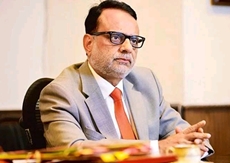GST to have twin rate structure for services
26 Apr 2017
The government on Tuesday hinted at two different tax slabs for services under the goods and services tax (GST), with segments such as transport inviting a lower levy compared to the 18 per cent tax on several other services.
 Speaking to reporters, revenue secretary Hasmukh Adhia said that services such as transport, where fuel is a major component, the service tax levy could be lower, with tax practitioners talking of a 12-per cent tax on such services.
Speaking to reporters, revenue secretary Hasmukh Adhia said that services such as transport, where fuel is a major component, the service tax levy could be lower, with tax practitioners talking of a 12-per cent tax on such services.
"The abatement rate has to be factored in and there can be more than one rate," Adhia said.
A decision on the actual rates would be taken by the GST Council, comprising union finance minister Arun Jaitley and state FMs.
Adhia also dismissed fears that GST implementation will lead to a spurt in inflation, saying that unlike in other countries, the transition to the new tax regime would be smooth in India.
He said other countries witnessed inflation during the transition to GST as they had single point tax system, while in India where there are multiple points of taxation the possibility is that prices would ease rather than rise.
"At present, we are tapping VAT at each stage of supply chain, from manufacturer to wholesaler to retailer. We already have multiple points taxation. Under GST, we are just merging the taxes of the Centre and states. The inflation which happened in other countries was because they shifted from single point taxation to GST," Adhia said at the GST Conclave.
Once the new indirect tax regime is rolled out, the incidence of tax on imported goods would be the same as that on the locally manufactured items, he pointed out, he said, adding that there is, however, a possibility of prices of imported goods going up, as local manufacturers escape the multiplicity of taxes.
Imported goods, he said, will be subject to Integrated GST (IGST) for which credit can be claimed at the time of sale. IGST is just an interim tax or a washout tax which is equivalent to the GST rate on a specific product, he added.
A similar GST rate will be applicable on locally manufactured goods and hence, there will be no advantage for the imported goods, he noted.
The government may also levy countervailing duty (CVD) and special additional duty (SAD) on imported goods to protect domestic manufacturers.
"The incidence of tax on imported goods will be equivalent to the tax paid by the local industry. This will strengthen domestic manufacturing and Make in India," Adhia said.
Goods and services tax (GST), which is proposed to be rolled out from 1 July, will subsume at least 10 different central and state levies and make India a uniform market for seamless transfer of goods and services.
It has generally been agreed by the centre and the states that businesses with turnover of up to Rs20 lakh be kept out of the GST ambit.
Entities with turnover of up to Rs50 lakh can opt for composition or compounding scheme under which traders and manufacturers will be required to file tax at 1 per cent and 2 per cent, respectively.
Restaurants within this threshold will attract 5 per cent tax.
Adhia said businesses opting for the composition scheme will have to file returns quarterly and only provide details of turnover. There is no need for filing of invoice-wise detail.
With regard to the provision in the Act on refund of IGST paid by international tourists, he said it will not be implemented with effect from 1 July, the GST rollout date as implementation of the provisions need time.
"We have kept that provision in the Act, but to implement it will take time. Immediately, it won't be available to foreign tourists, but after some time, we will see. We will have to develop a mechanism for it. We are not implementing this provision from July 1."
The IGST Act provides that integrated tax paid by tourists leaving India on any supply of goods taken out of the country by him shall be refunded. However, the conditions and safeguards are yet to be prescribed.
The IGST Act defines 'tourist' as a person who enters India for a stay of not more than six months for legitimate non-immigrant purpose.
Adhia said as many as 71 per cent of the existing taxpayers have already migrated to the GSTN portal and the CBEC has asked field offices to organise awareness camps in towns with a population of 1 lakh or more.
Also, the department will come out with sector-wise guidance note for GST implementation.
(See: An overview of GST)













.jpg)






.jpg)









